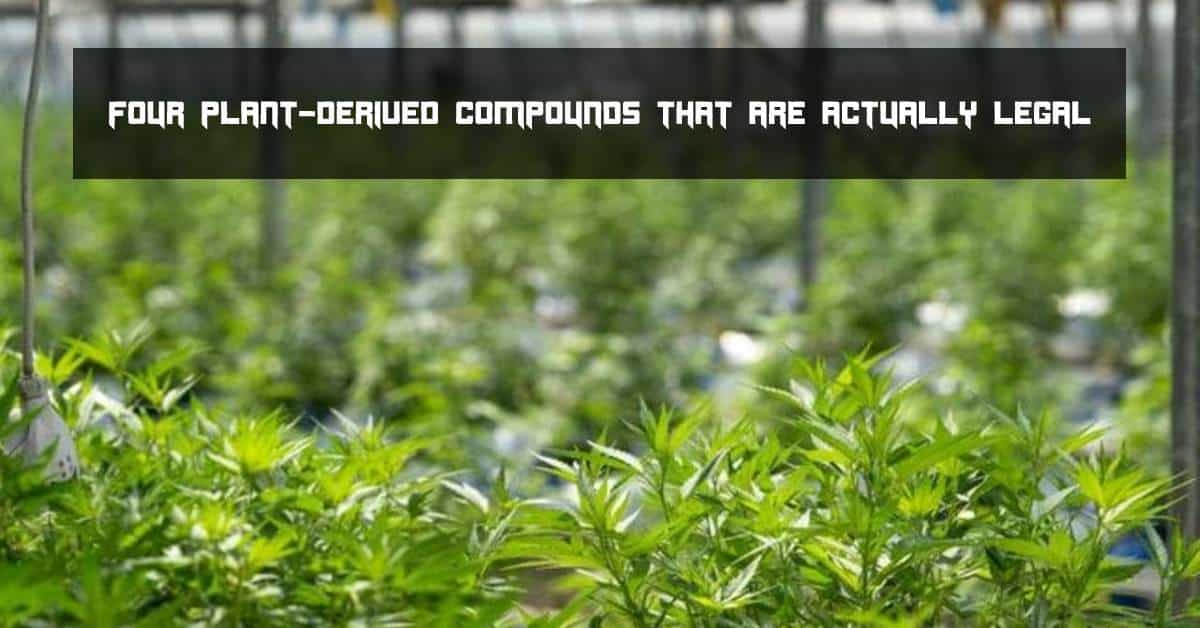
Although the current COVID-19 pandemic is continuing to wind down, health and wellness remains front and center in public thinking. This includes a shift in consumer interest from conventional synthetic drugs like benzodiazepines and opioids, which are notorious for their high abuse or dependency rates, as well dangerous side effects.
Due to the current designation of THC as a schedule I substance by the DEA, marijuana is still technically illegal at the federal level. However, in states where medical marijuana use is allowed, studies show promising success rates among cannabis compounds in relieving symptoms of common neurophysiological conditions.
Luckily, marijuana isn’t the only agricultural commodity with medicinal and therapeutic value. This post goes over three natural alternatives to synthetic drugs that can be used supplementarily with conventional treatment, or preventatively in states still enforcing marijuana prohibition.
Cannabidiol (CBD)
CBD is the single most abundant cannabinoid in hemp, with no psychoactive effects or mood-altering properties. While only pharmaceutical-grade CBD (Epidiolex) has been approved by the FDA for the treatment of epilepsy, emerging scientific research — as well as millions of consumer reviews online — suggest that even artisanal CBD products have therapeutic potential for common conditions like chronic inflammation and anxiety disorders.
The 2018 Farm Bill has been a boon for CBD products sourced from industrially grown hemp. Today, a range of products including high potency CBD oils, recovery balms and roll-ons is readily available for public purchase and use across all 50 states. CBD isolates and concentrates are also in circulation, commonly used by more imaginative consumers as infusions into food, beverages and even vaping liquids.
Delta-8 THC
Delta-8 Tetrahydrocannabinol (THC) is a cannabinoid that occurs naturally in the cannabis plant. It has milder psychoactive effects than its more well-known counterpart, Delta-9 THC, which is produced from marijuana.
Delta-8 THC is federally legal because it is derived from hemp and contains less than 0.03% Delta-9 THC. Delta-8 THC is thought to act similarly to CBD in that it moderates the psychoactivity of THC.
Delta-8 THC is commonly used by people who do not want marijuana’s more potent effects but still wish to benefit from the medicinal properties of cannabinoid therapy. A large number of studies suggest that Delta-8 THC has significant medical benefits for patients suffering from chronic pain.
There are a number of delta-8 THC products available including gummies, vapes, and oils. These products make users feel euphoric and relaxed. It reduces stress, depression, and anxiety. It also has sedative properties that can help people who suffer from insomnia.
Kratom
Kratom comes from the mitragyna speciosa tree which grows in many parts of Asia including Thailand where it’s chewed like tobacco, Myanmar (Burma) where both locals and tourists use it for its stimulant effects, and Papua New Guinea where the elderly use it to stave off fatigue. The leaves are ground into powder and often mixed with water or brewed as tea. The effects of kratom can be mild, moderate, or strong depending on the dosage used.
Kratom has been traditionally used in Thailand to reduce pain during childbirth and for menstrual cramps. In Western cultures, it is mainly ingested by people who want to manage chronic pain, anxiety or depression without using prescription drugs that may cause addiction or other adverse side-effects.
These days, kratom is not only popular in Asia but also growing in popularity in Europe and North America. Although kratom is considered by many to be a natural alternative to opioids for managing chronic pain, there has been very little research into the effects of long-term use. For this reason, both medicinal and recreational users are encouraged to use kratom sparingly, and only for good reason.
Kratom is currently unregulated in several countries, including Bulgaria, Denmark, Latvia, Lithuania and Poland where it’s sold as an incense or tea for decorative purposes.
Salvia
Salvia divinorum is a plant that can be found in many parts of the world, but has been used most commonly in the Americas. It’s an herb that contains psychoactive compounds, which can produce powerful psychedelic effects. Salvia has also been known to have medical benefits for people suffering from mood disorders like depression as well as conditions like PTSD.
Salvinorin A is the psychoactive compound within salvia which causes hallucinatory experiences very similar to those caused by psilocybin mushrooms and LSD. This chemical compound binds with kappa opioid receptors in the brain which are responsible for creating sensations of euphoria as well as pain relief.
Although salvia has been classified as a drug of concern, it currently remains legal throughout most states in the US. Because there hasn’t been much research conducted on this substance, the long-term effects of using salvia are unknown as of this writing. Currently, salvia treatment for users is limited to supportive care in some clinics and hospices.
Salvia has been used by the Mazatec Indians of Mexico for hundreds of years in the form of tea, which produces visionary effects that facilitate communication with divine entities. In modern times, salvia can be bought as dried leaves or extracts, but pure salvinorin A is available only as a transdermal patch.



